The BIOS
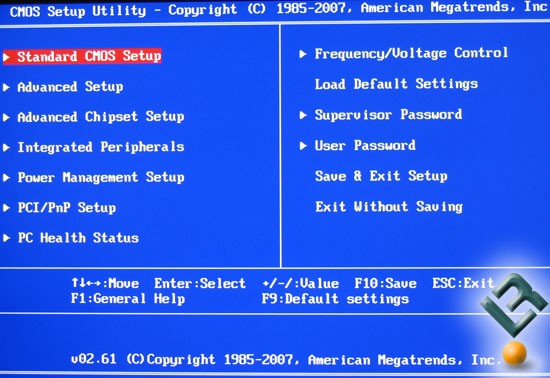
The ECS A780GM-A 'black series' motherboard uses a BIOS that many of our readers will be familiar with. Our motherboard came loaded BIOS version 08/01/21, but this was quickly updated to version 2008/03/11 as it had a large list of updates.
ECS A780GM-A Bios 2008/03/11 Updates:
- Supports AM2/AM2+ BlacK Edition CPU Voltage Overclock.
- Update AGESAV3_13.25 module.
- Remove patch Workaround For HPET RTC.
- Update AMD APM Module and 8.00.13_ACPI3-T07-NB-RS780_01.
- Update AGESAV3_13.26 module.(AGESA Version : 3.1.7.0)
- Update Raid Rom : 3.0.1540.30
We used this BIOS version for this article.
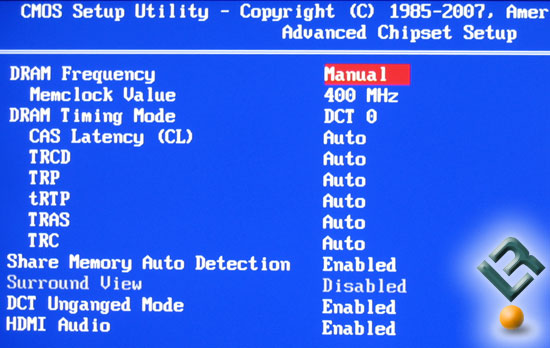
The first place many consumers need to go to is the advanced chipset setup menu as this is where you can set the memory clock frequency and timings. Our test system uses a 2GB Corsair XMS2 PC2-6400C4 memory kit that has the SPD set to 5-5-5-15 even though it's designed to run 4-4-4-12. By entering this menu we were able to correctly set the memory timings of the kit. This is one example of why you will want to enable the Advanced chipset menu in the BIOS.
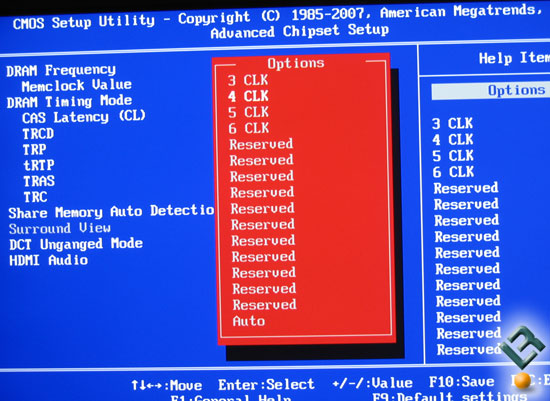
Is should be noted that ECS does have some issues with the memory timing settings in the BIOS. The board has a large number of 'reserved' spots that shouldn't be here. The above picture shows what happens when you try to adjust the TRCD value. When trying to adjust the TRAS all the options that pop up are 'Reserved' and you have to scroll through them to get to the real settings. We set the BIOS settings to 4-4-4-12 and when we restarted the system we found something we didn't expect.
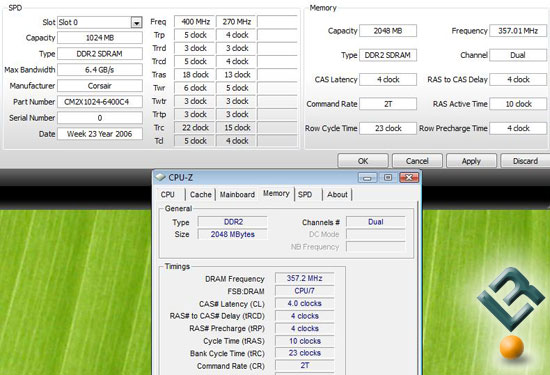
It seems that ECS has programmed the tRAS values wrong in the BIOS. With the tRAS set to 12 in the BIOS it was found to be really running 10. By setting the tRAS value to 14 in the BIOS we were able to correctly set the tRAS to 12. ECS has the tRAS value off by 2 clocks, which might cause some memory kits not to run correctly or even post for that matter.
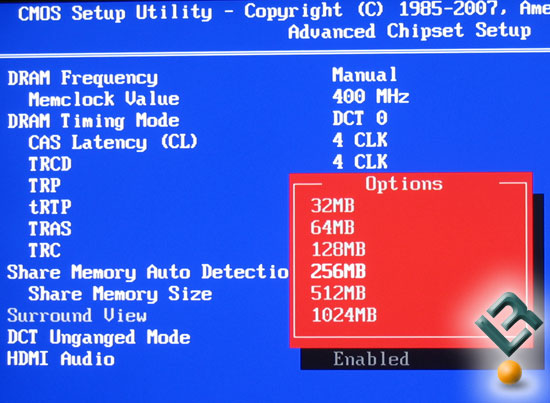
Back to the Avanced Chipset Setup menu! It is also here where you can adjust the UMA Frame Buffer Size for the integrated graphics. Be default the board is set to 512MB, but this can be changed depending on how you will use the board. First the 'Share Memory Auto Detection' setting must be disabled. After this is disabled the 'Share Memory Size' menu can be accessed. We lowered this setting down to 256MB for our testing. The Advanced Chipset Menu is also hosts the settings for SurroundView, HDMI audio and more.
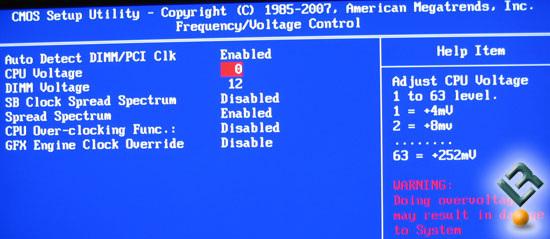
Moving over to the Frequency/Voltage control menu in the BIOS we find something that shocked us. On this board the ECS engineers have put the voltages by levels and the levels are in millivolts (mV). A millivolt is 10 to the -3 so consumers have to know this and then move the decimal point 3 places to the left to get Volts. If this isn't hard enough level one is +4 millivolts, level two is +8 millivolts and so on. The board comes at level 0 and is able to go up to level 63 for the processor, but sadly it doesn't tell you what the starting voltage is. Are you kidding me? This is something I've never seen to be honest and it's nasty. Why not use just Volts like everyone else! This setting allows the processor voltage to be increased 0.252V from whatever the unknown default setting is.
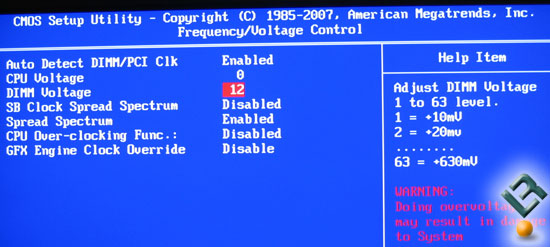
The memory voltage is also in millivolts and is factory over-volted at +120mV or .12V over whatever the default setting is. The memory voltage can be increased by 0.63V over the default value, which again is unknown.
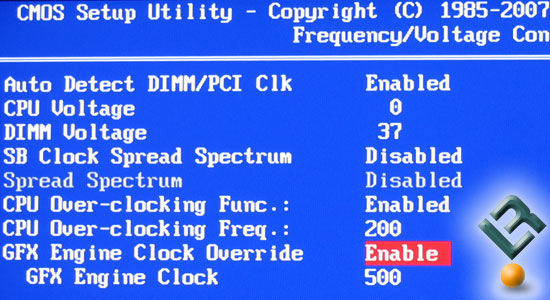
To get our 2GB Corsair XMS2 PC2-6400C4 memory kit to run stable at 4-4-4-12 timings (set to 4-4-4-14 in this BIOS as the tRAS is set wrong) we had to increase the DIMM voltage from level 12 to level 37. If you want to overclock the processor bus frequency or the integrated graphics you will find the place for that here and you just need to enter the value you want.
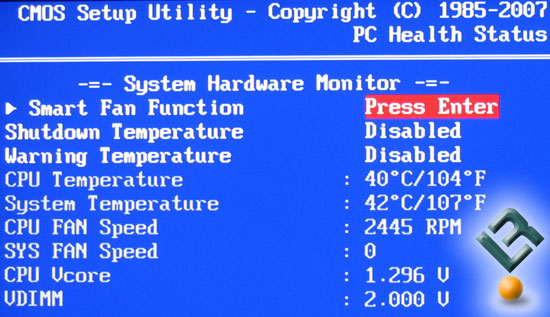
Under the PC Health Status menu we can find the out the details on the temperatures, fan speeds as well as the CPU and Memory voltages! Looks like the default CPU Vcore on our e4850 processor is 1.296V and with the memory set to level 37 the VDIMM is 2.0V. If you subtract .37V from the VDIMM it looks like the default voltage on the memory is 1.63V. The BIOS on the ECS A780GM-A motherboard gets the job done, but it's nasty and not fun to work with. ECS should be able to fix the BIOS with little effort and to be honest it's shocking to see something like this on a retail board that has been on the market for over a month now and already has BIOS updates out.

